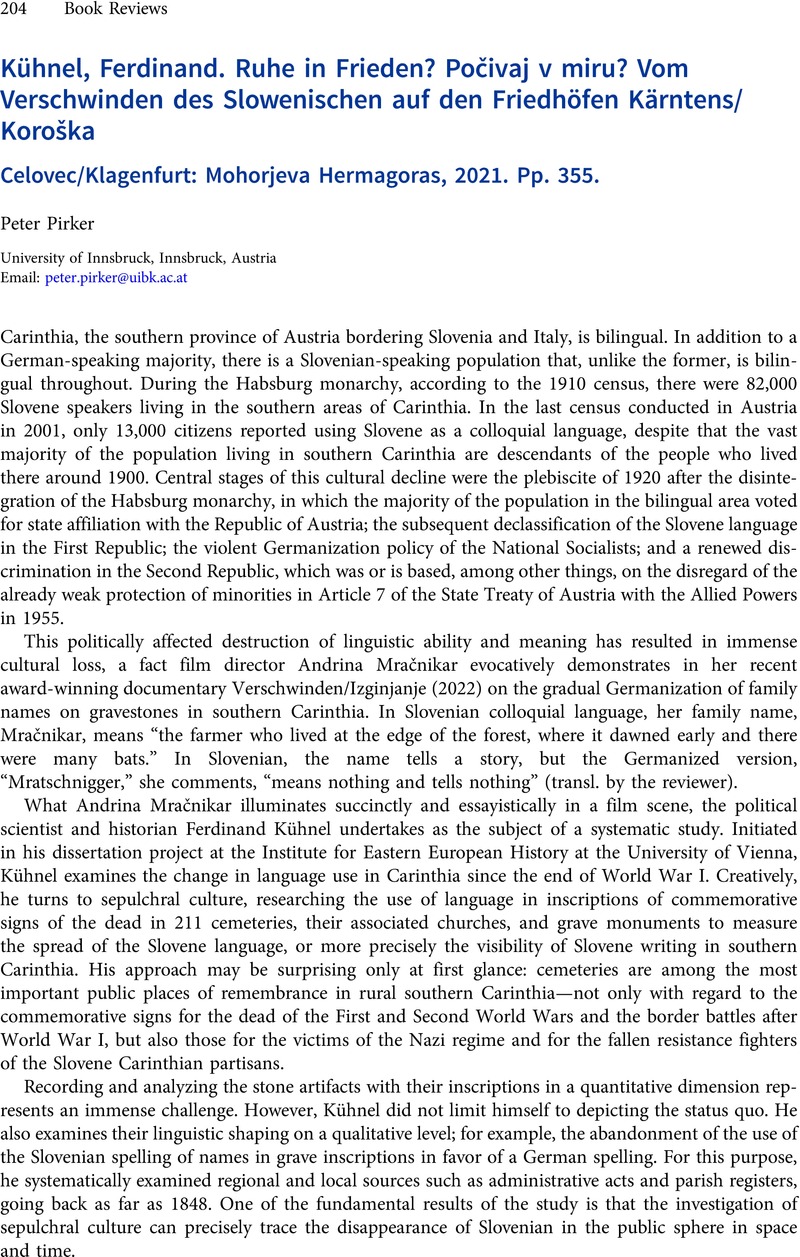No CrossRef data available.
Article contents
Ferdinand Kühnel. Ruhe in Frieden? Počivaj v miru? Vom Verschwinden des Slowenischen auf den Friedhöfen Kärntens/Koroška Celovec/Klagenfurt: Mohorjeva Hermagoras, 2021. Pp. 355.
Review products
Ferdinand Kühnel. Ruhe in Frieden? Počivaj v miru? Vom Verschwinden des Slowenischen auf den Friedhöfen Kärntens/Koroška Celovec/Klagenfurt: Mohorjeva Hermagoras, 2021. Pp. 355.
Published online by Cambridge University Press: 25 May 2023
Abstract
An abstract is not available for this content so a preview has been provided. Please use the Get access link above for information on how to access this content.

- Type
- Book Review: General
- Information
- Copyright
- Copyright © The Author(s), 2023. Published by Cambridge University Press on behalf of the Center for Austrian Studies, University of Minnesota.



